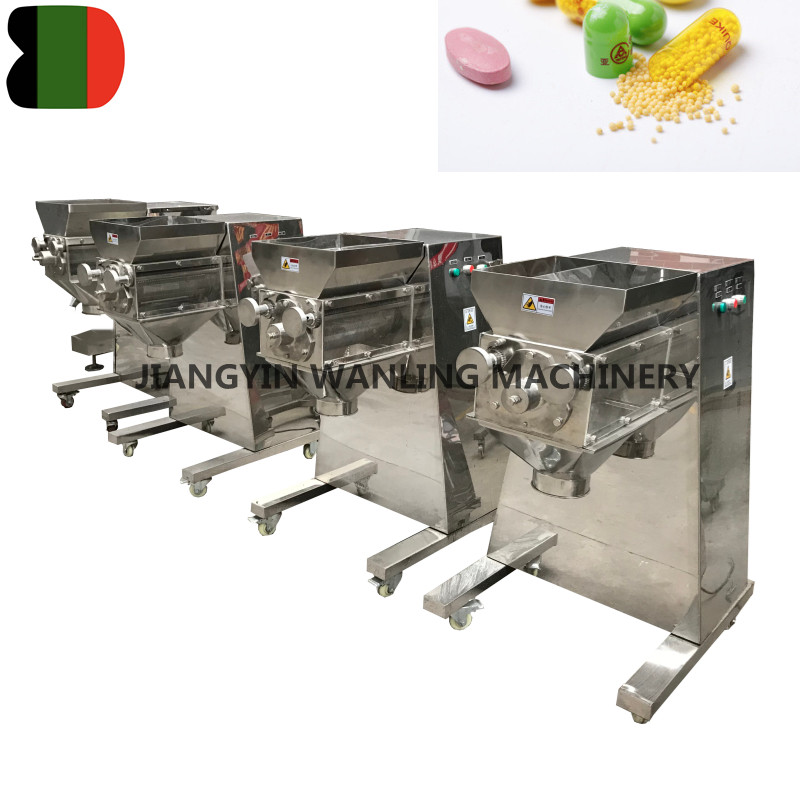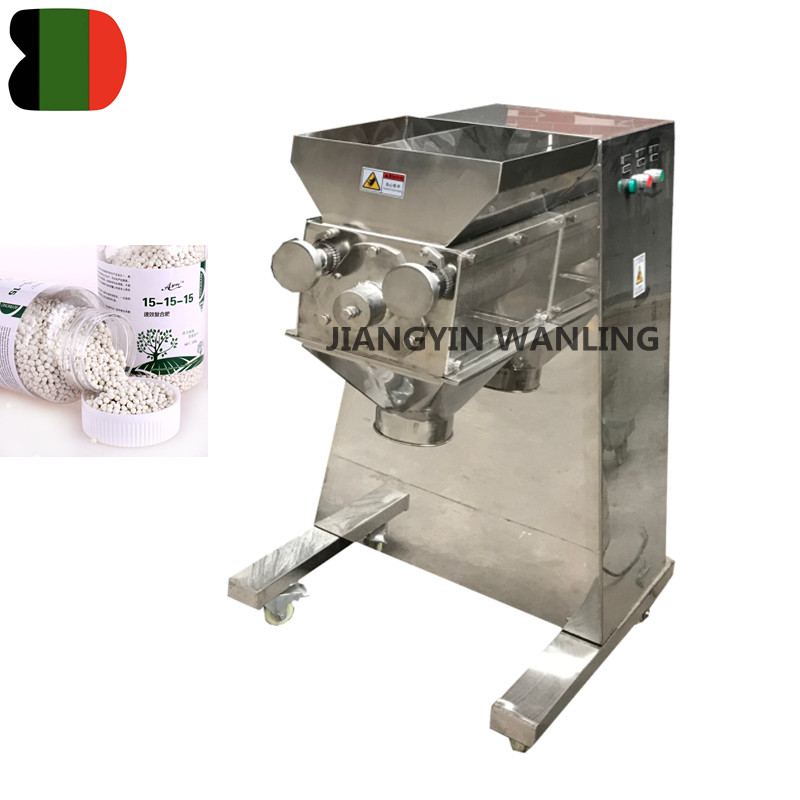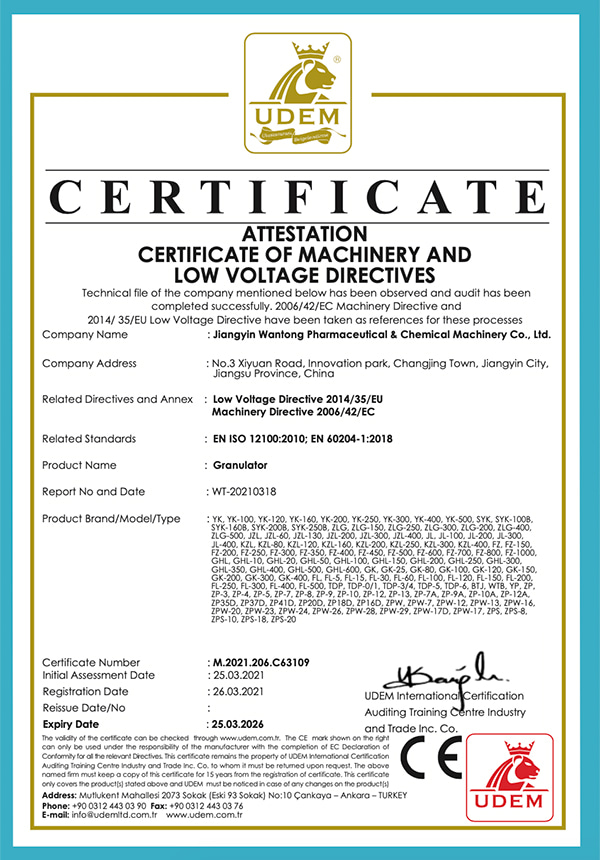Swing Granulator Manufacturer
-

WYK Chemical Granule Oscillation Swing Granulator
The swing granulator is widely used in pharmaceutical industry, chemical industry, foodstuff industry, powdered drink and so on. It can make... -

SYK Double Cylinder Type Swing Granulator
Double Cylinder Swing Granulator can make wet powder material into particles. It can also be used to crush the blocked dry raw material quic... -

WYK single cylinder oscillation swing granulator
The oscillation swing granulator is widely used in pharmaceutical industry, chemical industry, foodstuff industry, powdered drink and so on....
Swing granulator is a device that can make mixed powdered materials into particles, as well as crush block shaped dry materials into desired particles. It is suitable for granulation of dry bulk raw materials in the pharmaceutical, chemical, and food industries, as well as other irregular particles produced by increasing fluidity through granulation. Under the positive and negative effects of the drum, the equipment forcibly passes through the sieve, making it particles.

About Us
Honor
-
 Honor
Honor -
 CE
CE
News
-
Industry News 2025-12-12
How to Choose the Right Ribbon Blender for Powder and Granule Mixing Choosing a ribbon blender for ...
View More -
Industry News 2025-12-07
Introduction: The Versatile Workhorse of Size Reduction In the vast landscape of industrial processi...
View More -
Industry News 2025-11-24
The Importance of Efficient Mixing in Powder Processing In powder processing, achieving a uniform an...
View More -
Industry News 2025-11-18
A rapid mixer granulator is a high-shear wet granulation system widely adopted in pharmaceutical man...
View More
Industry Knowledge Expansion
What are the options for dust control and containment when using a swing granulator?
Controlling dust and ensuring containment during the operation of a swing granulator is crucial for maintaining a safe and healthy working environment, as well as for environmental compliance. Here are some common options for dust control and containment when using a swing granulator:
Dust Collection Systems: These systems capture and remove dust particles from the air. They can be connected directly to the granulator's discharge point or to the entire operation area to capture dust generated during the granulation process.
Enclosed or Covered Granulator: Enclosures can be built around the granulator to contain dust within a confined space. This not only helps in dust control but also provides a safer operation by shielding the machinery.
Wet Scrubbers: In some cases, where dust is a significant issue, wet scrubbers can be used to remove contaminants from exhaust gases, which can then be safely vented into the atmosphere.
Ventilation and Air Filtration: Proper ventilation in the working area can help to disperse dust particles. Air filtration systems can be installed to clean the air before it is released back into the environment.
Negative Pressure Systems: These systems create a negative pressure within the granulator enclosure, which helps to prevent dust from escaping into the surrounding area.
Cyclones and Separators: Cyclone separators can be used to separate dust particles from the air. They work by creating a centrifugal force that throws the dust particles against the cyclone wall and into a collection area.
Dust Suppressants: In some cases, dust suppressants or binders can be added to the material being granulated to reduce dust generation.
Proper Material Handling: Ensuring that materials are handled correctly and that transfer points are sealed can help to minimize dust generation.
Local Exhaust Ventilation (LEV): LEV systems can be installed at the point of dust generation to capture and remove dust before it spreads into the work environment.
Use of Dust Barriers: Physical barriers can be used around the granulator to help contain dust and direct it towards collection points.
By implementing these dust control and containment measures, facilities can effectively manage dust generated by swing granulators, ensuring a cleaner and safer work environment.



 Español
Español
